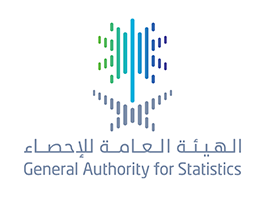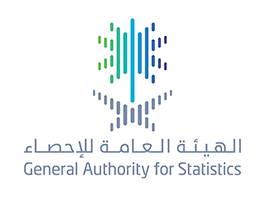
الهيئة العامة للإحصاء تطلق أكثر من 45 منتج إحصائي جديد

معالي رئيس الهيئة يثمن موافقة مجلس الوزراء ويؤكد على استمرار العمل الإحصائي لدعم قرارات التنمية
The application of GOSI's staff regulations and pay scale on the staff of GaStat
H.E. the President of GaStat appreciates the approval of the Cabinet and confirms the continuation of the statistical work to support development decisions
H.E. the President of the General Authority for Statistics, Dr. Fahad Bin Sulaiman Altekhaifi, appreciated the approval of the Cabinet in its meeting on Monday, 30th of Muharram 1438H on the application of GOSI's staff regulations and pay scale on the staff of GaStat.
H.E. expressed his gratitude to His Highness the Custodian of the Two Holy Mosques, King Salman Bin Abdulaziz Al Saud, and His Highness the deputy Crown Prince for the support given to all government entities to achieve its objective in national development. It reflects the care of the prudent leadership for developing the infrastructure of all development resolutions, considering the statistical products and services provided by GaStat as a solid bases to support national development decisions, and support decision makers with information that is considered the compass of development work. H.E. stressed that the application of GOSI's staff regulations and pay scale helps GaStat to adapt to next phase requirements and allows them to attract specialized national talents in the statistical and administrative work in an effort to complete the transformation, which started after the Royal Decree No. (64283), dated 26/12/1436H, approving the transformation from (Central Department of Statistics and Information) into an independent Authority. This transformation helped in enhancing the environment to provide a wider range of statistical information and data and its dissemination to support decision making. Since the Royal Decree issuance, GaStat worked on the preparation of a transformation road map in statistical work including a number of projects and initiatives that are consistent with the 2020 National transformation Program, and the 2030 Saudi Vision.
It is worth mentioning that the modification, on which the cabinet has agreed, was listed as ( the second) item of the cabinet resolution of the General Authority for Statistics organization, number (11) in 13/01/1437 H. The resolution was modified to be as following " except the authority president, GOSI regulations, pay scales, and modifications are applied on GaStat staff". The organization included (17) terms covering a group of organizational rules, the most important of which are: stressing on the authority's legal personality, administrative and financial independency, and asserting that it is the only statistics- concerned entity. Moreover, it is the only official reference that supervises and organizes the statistical work. The authority's affairs are managed by a board that contains (18) entities, (13) of which are government entities including the authority, in addition to the council of Saudi chambers, and two independent statistics specialists. The board is headed by HE minister of economy and planning, and has been given the description of " the dominant authority" which means implementing its resolutions on the level of statistical sector and all its components in Saudi Arabia. The organization has charged the authority with the responsibility of forming a coordination committee that constantly coordinate the statistical work between the authority and the other related entities. The authority will also carry out the responsibility of founding an information central system in the authority that is automatically linked with all concerned entities. Furthermore, the organization included many tasks in addition to implementing the statistical works such as: applying the recognized international standards which include the statistical work methodology, designing and implementing surveys, conducting research and studies, analyzing data and information, documenting data, collecting, recording, classifying, and analyzing statistical data ,which cover all aspects of life in Saudi Arabia, from its different sources either from surveys, censuses, or administrative records in the public and private establishments. Moreover, the tasks include preparing, using, and updating the national statistical guides and classifications according to international standards, preparing and publishing the surveys and researches' statistical reports and bulletins, providing statistical services, conducting surveys, preparing statistical studies and researches to provide the establishments and business sector with statistical data from its databases. In addition to the tasks of exchanging knowledge, providing the entities with recommendations to improve all information systems and statistical work methodology, so that they can have a unified, accurate, and comprehensive statistical system. The tasks also cover raising awareness about the importance of statistics, recording and following any statistics related to Saudi Arabia published by the national and international authorities, and coordinating with the concerned entities.

الهيئة العامة للإحصاء : ارتفاع الصادرات وانخفاض الواردات السلعية للمملكة العربية السعودية في الربع الأول 2017
GaStat: An Increase in Exports and a Decrease in Merchandise Imports of Saudi Arabia (1st quarter-2017)
The value of merchandise exports of Saudi Arabia during the first quarter of 2017 amounted to (206984) million riyals compared to (140186) million riyals for the same quarter last year, with an increase of (66799) million riyals (47.7%). While non-oil exports amounted to (44849) million riyals during the first quarter of 2017 compared to (43029) million riyals for the same period last year, with an increase of (1820) million riyals (4.2%). The value of Saudi Arabia's imports during the first quarter decreased by (12.3%) to reach (125558) million riyals with a decrease of (17542) million riyals compared to same quarter last year which recorded (143100) million riyals.
According to the quarterly report issued by GaStat for the first quarter of 2017, the value of Saudi merchandise exports recorded an increase of (5.2%) compared to the last quarter (4th quarter 2016) which recorded (196842) million riyals. While non-oil exports recorded a decrease of (4.5%)compared to the last quarter (4th quarter 2016) which recorded (46964) million riyals. The Saudi imports recorded a decrease of (0,05%) compared to the last quarter which recorded (125616) million riyals. The ratio of non-oil exports to imports reached (35.7%) in the first quarter of 2017 compared to (30.1%) for the same quarter last year, but this percentage was lower than the previous quarter (fourth quarter 2016), which recorded (37.4%).
The report shows that 20.4% of the imports were capital goods, 39.3% intermediate goods and 40.3% imports were goods for final consumption.
The increase in the value of non-oil exports in the first quarter of 2017 compared to the same quarter of last year was the result of the rise of the most important sections of merchandises exported, mainly plastics, rubber and their products, which rose by (9.8%) to the value of (14570) million riyals.
The products of chemical industries and related industries increased to (13355) million riyals compared to (11361) million riyals in the first quarter of 2016, which means an increase of (1993) million riyals (17.5%). Base metals and its products increased to (3703) million riyals Compared to (3636) million riyals in the first quarter of 2016, which means an increase of (66) million riyals (1.8%). The exports of Saudi Arabia in the transport equipment and its parts, machinery, and electrical appliances and equipment section reached (6204) million riyals which form (13.8%) of the Saudi non-oil exports in this period.
Regarding imports, the machinery, electrical appliances and equipment and thereof decreased by (19.3%) to reach (30191) million riyals in the first quarter of 2017 compared to (37397) million riyals in the first quarter of 2016. The imports of transportation equipment and thereof decreased to (20529) million riyals compared to (25377) million riyals (19.1%). While imports of chemical products and related industries decreased by (4.7%) to record (12638) million riyals in the first quarter of 2017 compared to (13268) million riyals for the same period last year.
The report pointed out that the total volume of non-oil exported merchandise increased to (13248) thousand tons in the first quarter of 2017 compared to (13103) thousand tons in the first quarter of 2016, which means an increase of 1.1%. The volume of imports in the first quarter of 2017 also decreased to (17130) thousand tons compared to (20561) thousand tons for the same quarter of last year with a decrease of (16.7%).
On the geographical distribution of Saudi Arabia's exports of non-oil merchandise, the report pointed out that exports to Asian countries, excluding Arab and Islamic countries, are at the top of the groups that have been exported to, recording a rise of (32.1%) to register (14246) in the first quarter of 2017 compared to (10781) million riyals in the first quarter 2016.
Exports to the GCC countries decreased by (4.9%) to reach (11934) million riyals, while the rest of the groups decreased to (5.3%) to register (18669) million riyals.
UAE is the top country for exports in the first quarter of 2017:
The United Arab Emirates, China, India, Singapore and Kuwait are the top countries for exports, as their exports formed (41.7%) of the total non-oil exports compared to (36.6%) in the first quarter of 2016.
China is the top country for imports in the first quarter of 2017:
The United States of America, China, Germany, the United Arab Emirates and Japan are the top countries of imports, as their merchandise imports formed (45.9%) compared to (46%) in the first quarter of 2016.

الهيئة العامة للإحصاء تصدر مؤشر الرقم القياسي للعقارات للربع الثاني – 2017م
Based on record data from the Ministry of Justice
GaStat Issued the Real Estate Price Index for the 2nd Quarter- 2017
On Monday 1 Dhu al- Qa’dah, 1438H (July 24, 2017), the General Authority for Statistics (GaStat) issued the Real Estate Price Index in Saudi Arabia, which is based on record data available at the Ministry of Justice about real estate transactions. GaStat described the Real Estate Price Index as an important tool to support stakeholders in making economic and statistical decisions regarding the movements of real estate prices and future forecasts during different periods of time. The index includes three main sectors consisting of several types of real estate: Residential sector consisting of the following types (land, Apartment and house), commercial sector consisting of (land, building, showroom/ store or commercial centre), agricultural sector consisting of one type which is agricultural land.
The Real Estate Price Index showed a decline in real estate prices for the second quarter of 2017, which reached 0.6% compared to the previous quarter (1st quarter 20170) . the index also recorded a decline of 8.6% in the second quarter of 2017 compared to the same quarter last year (2nd quarter 2016).
The report, which was published today, attributed the decline in Real Estate Price Index for the 2nd quarter of 2017 compared to the previous quarter (1st quarter 2017) to the decline witnessed in two of the main sectors comprising the index: the commercial sector 2.2% and the agricultural sector 0.2%, while The housing sector rose 0.2%.
The decline in the Real Estate Price index for the second quarter of 2017 compared to the previous year (second quarter 2016) is the result of the decline in all the main sectors comprising the index: the commercial sector 10.9%, the residential sector 7.9%, the agricultural sector 1.0% .
As part of its duties as an official reference for statistics in Saudi Arabia and as a supervisor and organizer of the statistical sector, the General Authority for Statistics has taken care to monitor the movements of the prices of the constituent units of the real estate sector and monitor the value of their transactions in various regions of the Kingdom and follow the changes that occur from time to time through the statistical product “Real Estate Price Index” which is prepared based on data provided by the Ministry of Justice in this field, within the framework of integration and cooperation between the various governmental bodies aimed at advancing sustainable development in the Kingdom.
This product aims at finding unique real estate indices that measure the performance of real estate market in the Kingdom and fill the data gap in this sector. It is an important tool to support economic decision makers. Its data benefit individuals interested in the economic and statistical analysis of real estate movements and future forecast during different periods of time.
